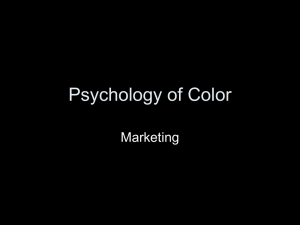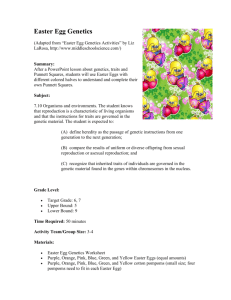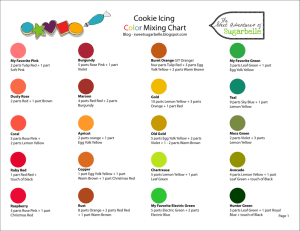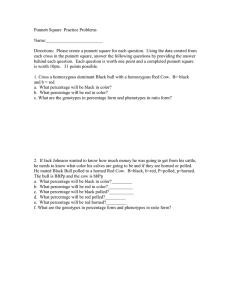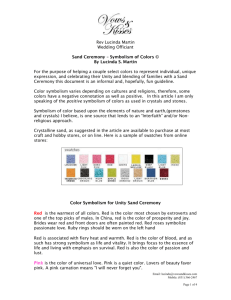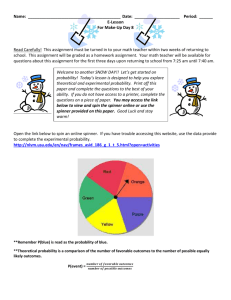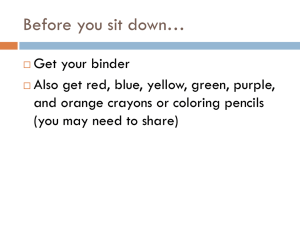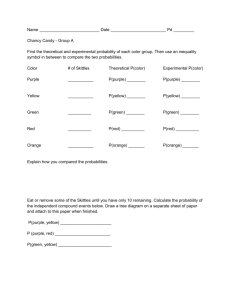Easter Egg Genetics
advertisement
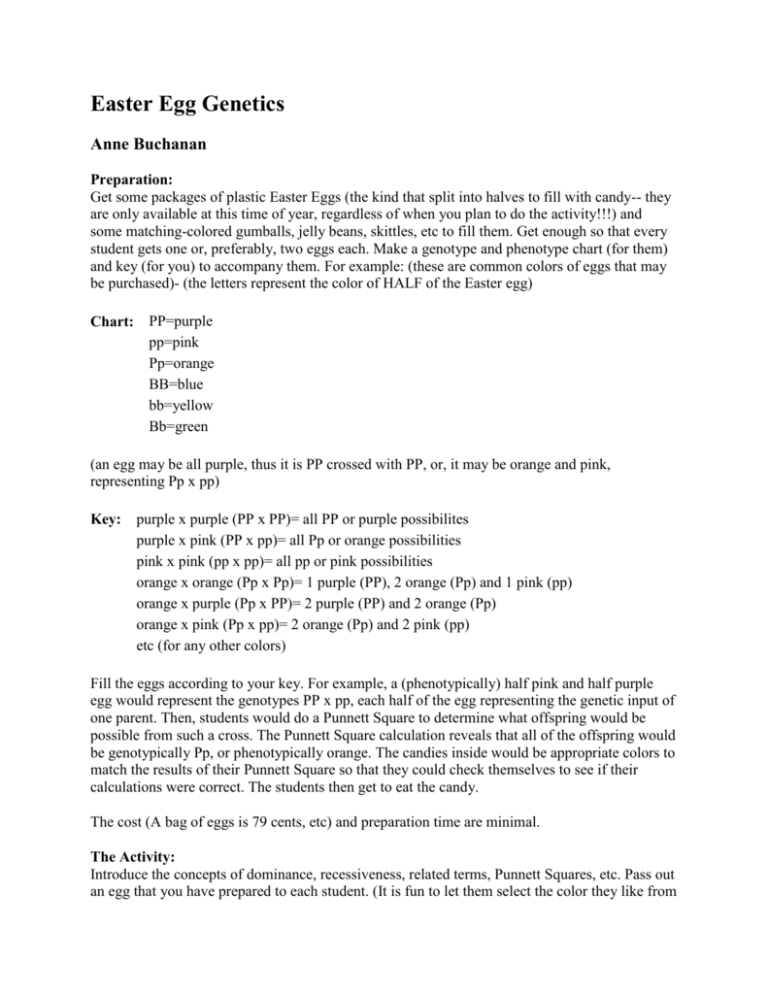
Easter Egg Genetics Anne Buchanan Preparation: Get some packages of plastic Easter Eggs (the kind that split into halves to fill with candy-- they are only available at this time of year, regardless of when you plan to do the activity!!!) and some matching-colored gumballs, jelly beans, skittles, etc to fill them. Get enough so that every student gets one or, preferably, two eggs each. Make a genotype and phenotype chart (for them) and key (for you) to accompany them. For example: (these are common colors of eggs that may be purchased)- (the letters represent the color of HALF of the Easter egg) Chart: PP=purple pp=pink Pp=orange BB=blue bb=yellow Bb=green (an egg may be all purple, thus it is PP crossed with PP, or, it may be orange and pink, representing Pp x pp) Key: purple x purple (PP x PP)= all PP or purple possibilites purple x pink (PP x pp)= all Pp or orange possibilities pink x pink (pp x pp)= all pp or pink possibilities orange x orange (Pp x Pp)= 1 purple (PP), 2 orange (Pp) and 1 pink (pp) orange x purple (Pp x PP)= 2 purple (PP) and 2 orange (Pp) orange x pink (Pp x pp)= 2 orange (Pp) and 2 pink (pp) etc (for any other colors) Fill the eggs according to your key. For example, a (phenotypically) half pink and half purple egg would represent the genotypes PP x pp, each half of the egg representing the genetic input of one parent. Then, students would do a Punnett Square to determine what offspring would be possible from such a cross. The Punnett Square calculation reveals that all of the offspring would be genotypically Pp, or phenotypically orange. The candies inside would be appropriate colors to match the results of their Punnett Square so that they could check themselves to see if their calculations were correct. The students then get to eat the candy. The cost (A bag of eggs is 79 cents, etc) and preparation time are minimal. The Activity: Introduce the concepts of dominance, recessiveness, related terms, Punnett Squares, etc. Pass out an egg that you have prepared to each student. (It is fun to let them select the color they like from an Easter basket, if that is politically correct in your environment.) Put a chart up on the board or overhead that indicates what trait is represented by the color of each half of the egg they are holding. Then, students examine their respective eggs, figure out the genotypes of their "parent" eggs, and do a Punnett Square to determine what offspring would be possible from such a cross. The candies inside would be appropriate colors to match the results of their Punnett Square so that they could check themselves to see if their calculations were correct. Collect your eggs back for next year. Suggestions: 1) Have your students handle the eggs carefully, they break/crack easily if dropped or squeezed. 2) Have students put them back together before they return them so you don't have to "re-figure out" the halves the next time you set up the activity. Optional modifications: You might use white candy to represent albinos or smush some of the candies to represent the incidence of mutation or genetic disease.

